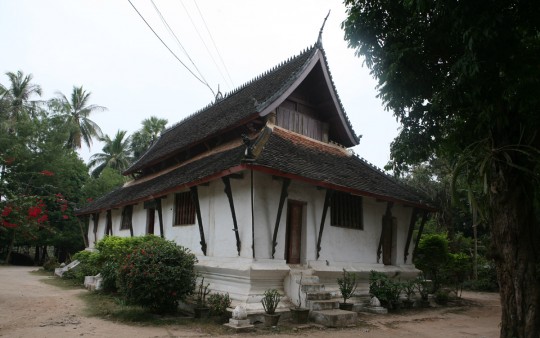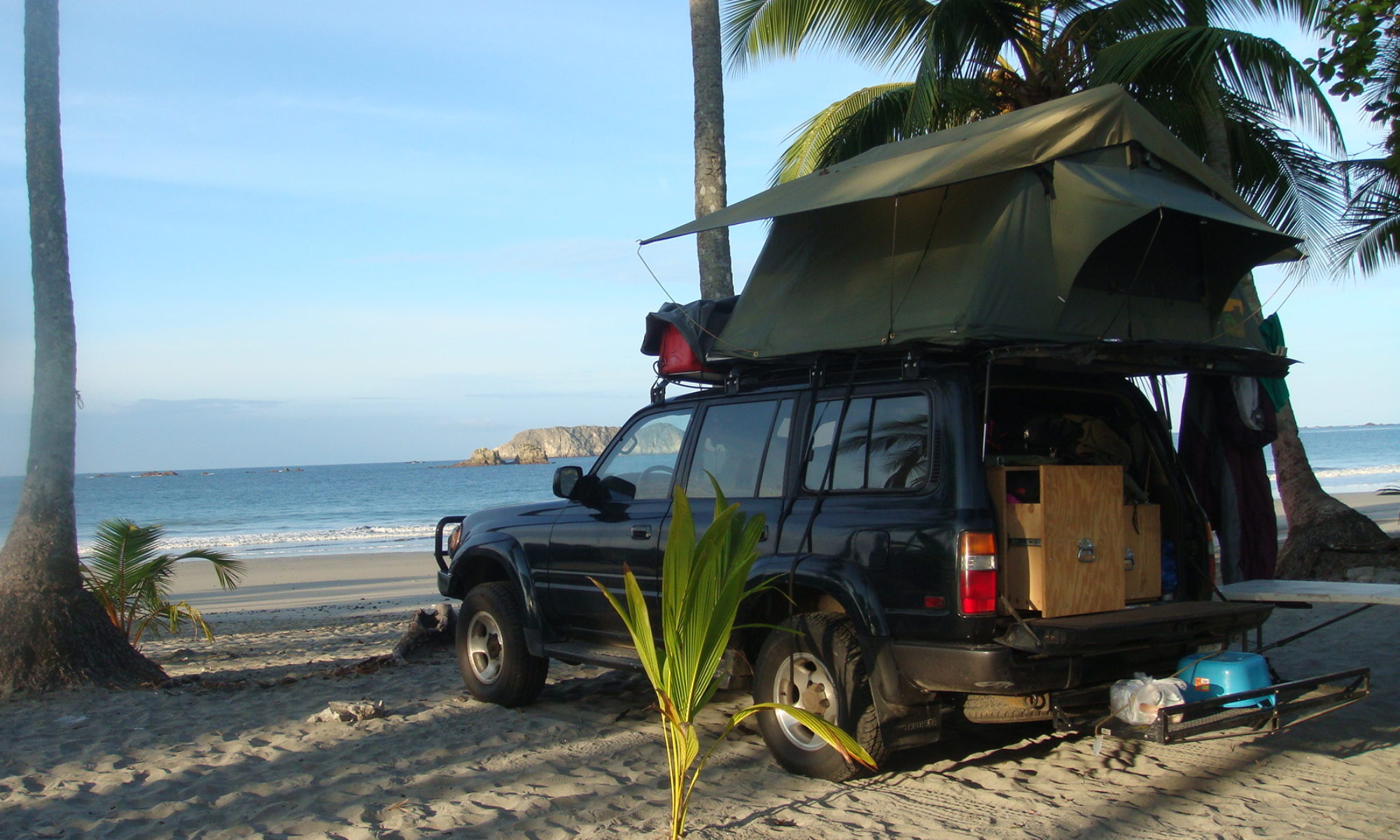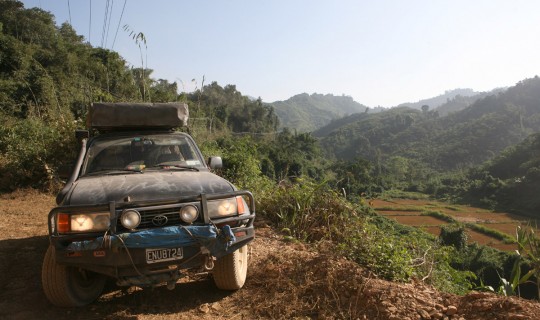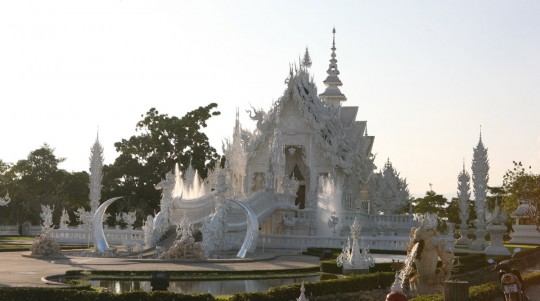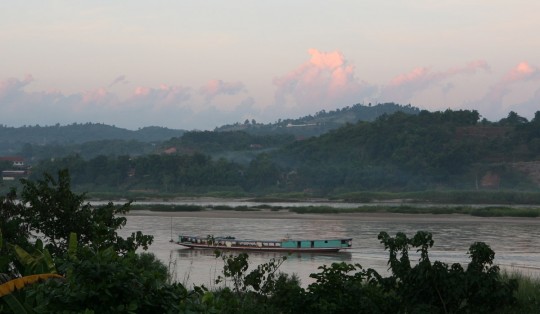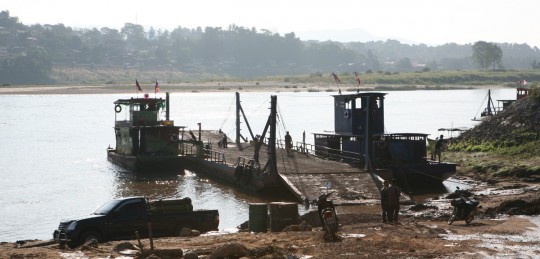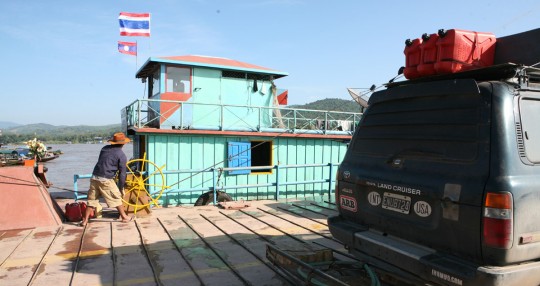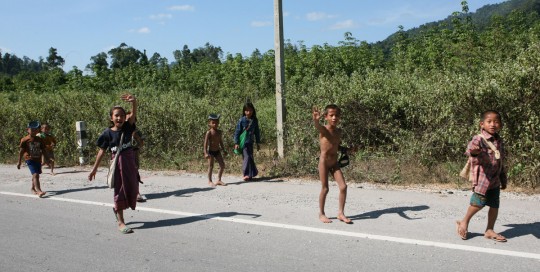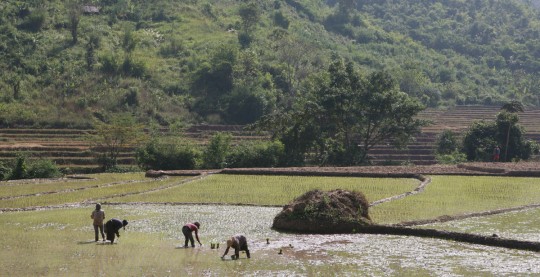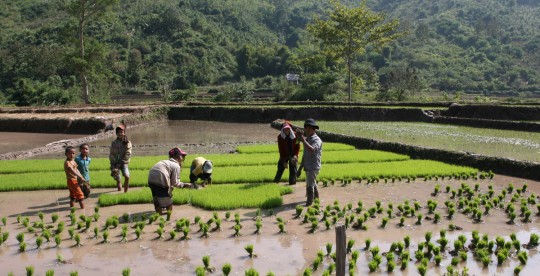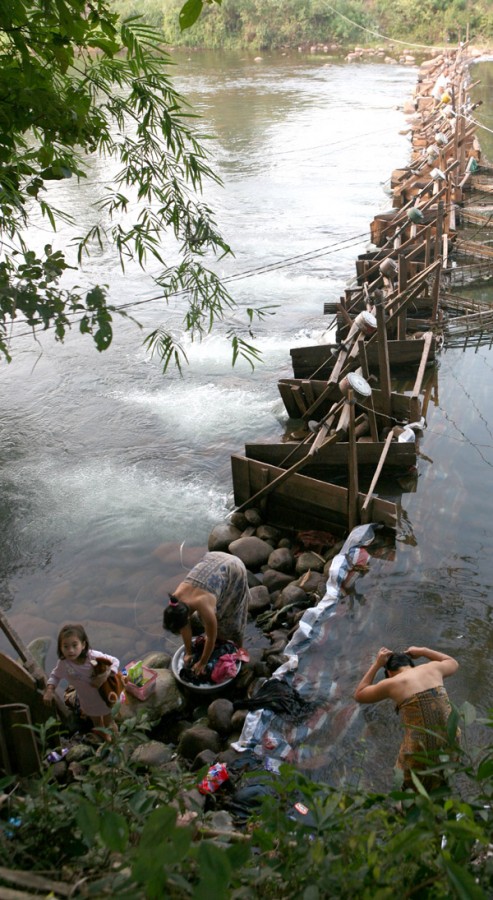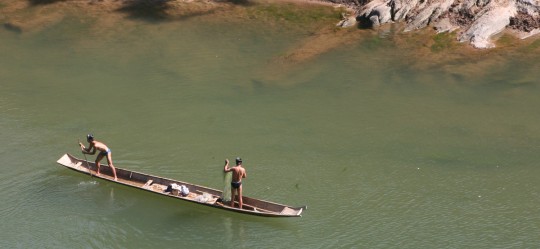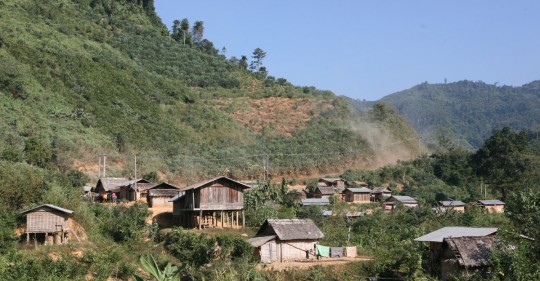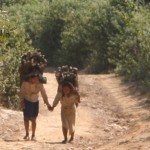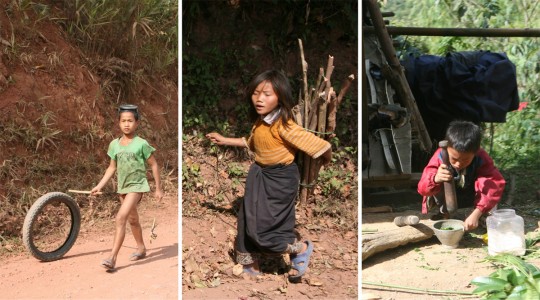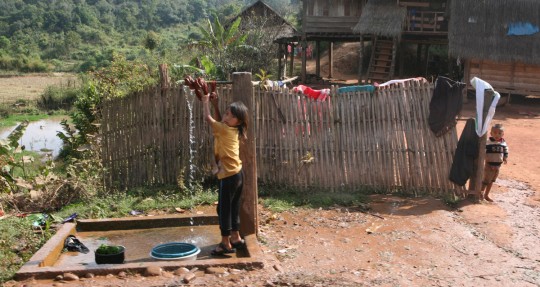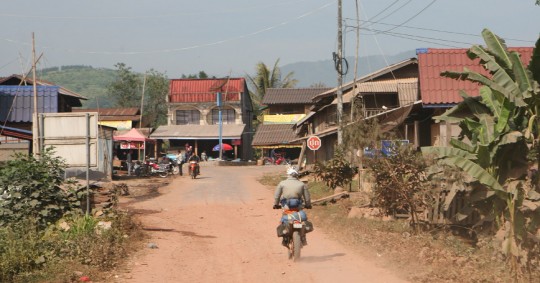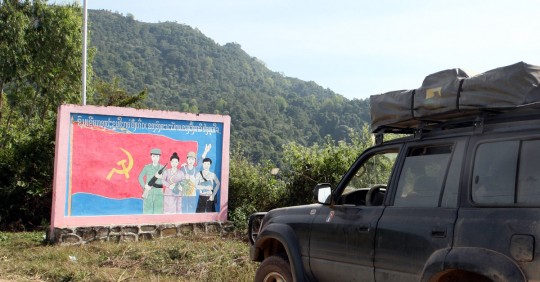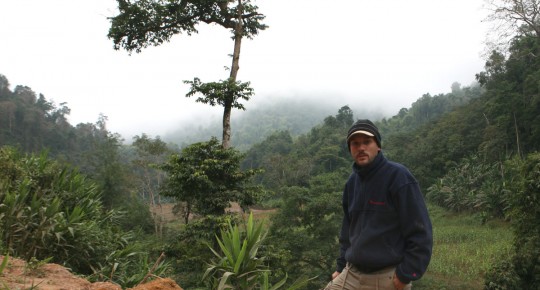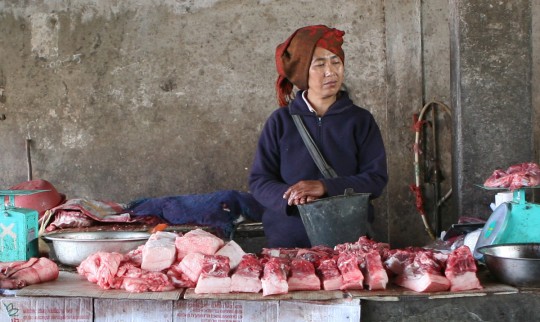
There’s not much to do in Phongsaly. The adventure you find more on the route to the town than in the town itself. Two restaurants, three guest houses and you saw everything. There’s a nice little market where I am able to buy vegetables which allow us to escape from the omnipresent fried rice.
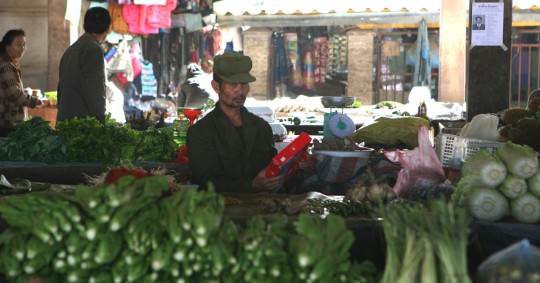
At the image of the population of the town, most shops, restaurants and hostels are owned by Chinese which are brutal traders. You can’t win against them and they never accept to lower their ridiculous prices. It is not Thailand here, and you better make sure of the cost before you order something.
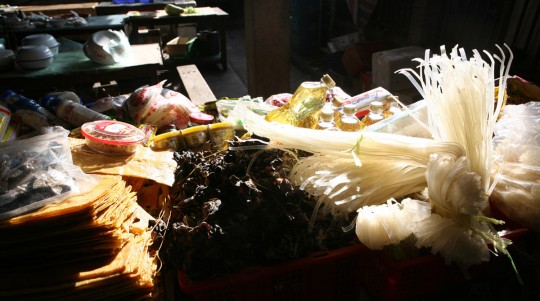
Four hundreds steps to go up to see a “stupa” on an elevation dominating the dwellings and you did most of what’s possible to do in town. Or almost everything. The big everyday event is the arrival of the only bus coming to good old Phongsaly. You can go watch people tired by the nine hours trip falling out the bus.
Among them, there’s always one of two tourists. Everybody eventually meets in the only restaurant open after 8 p.m. and exchange travelers tips. One recent day, we hear from one of them about a very old tea plantation up in the mountains. To be exact it is supposed to be the oldest in the world. Soon enough few people are interested to join Philip and me to explore this new destination.
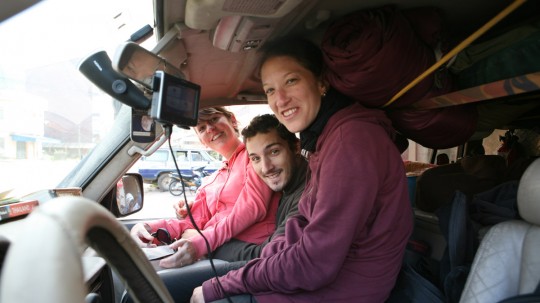
The following day, we drive to the tea plantation. As in Camobodia, most tourists here are french, and on this day they pile-up on the passenger seat of my truck. The road shakes us up a bit, but less than an hour after we arrive on the site.
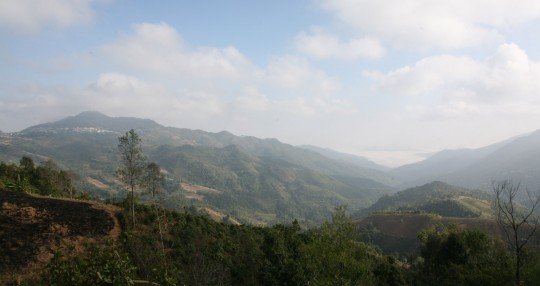
We spent a bit of time speaking with a strange hunter on the way. He is planting traps for rats among the trees. He showed us how the system is working. Only after few minutes back on the road I realize this guy is actually eating the rats he catches.
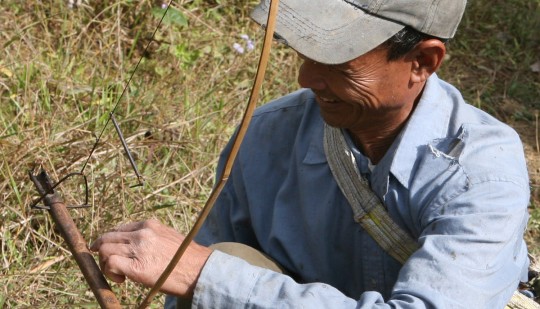
I completely forgot fried rats were eaten in many Asia countries like China, Vietnam, Laos, Cambodia and Thailand. I gave our hunter a bag of fried pork skin I bought by mistake thinking it was potato chips. It will make a change in his diet.
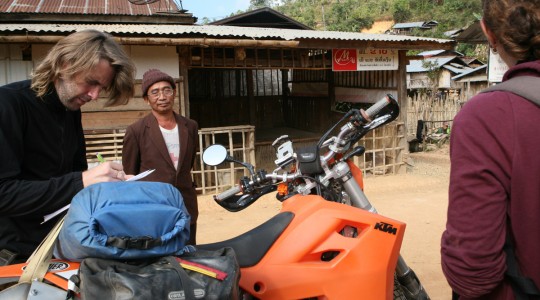
At the tea plantation, an old man shows us around and invites us to try some tea. Most of the tea trees are very old there, some as much as 400 years. In most plantations, the tree-tops are being cut so leaves can be picked by people on foot. In Phongsaly, the trees are left to grow, and villagers have to climb to collect the leaves.
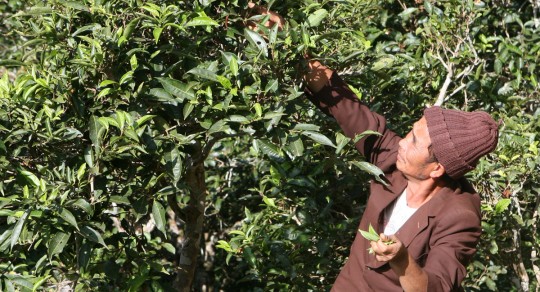
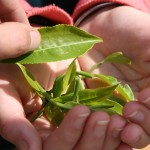
After fierce negotiations we are able to buy few shopping bags of dried leaves for US$2. We spend some time in the village with the kids and we can see the inhabitants in their daily work tasks. but soon we need to leave. The tourism office of Phongsaly learned we are up there and they are complaining we didn’t use a guide to visit the village. We promise next time we will…
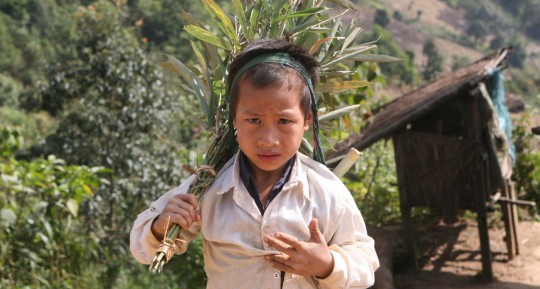
After two very cold nights in the city, we decide it is time to go back down the mountain. We stayed in a hotel in town because it is too cold to camp (Viphaphone hotel, US$10 for a double room, not recommended they will rip you off! Try Sensaly guesthouse instead). Temperatures come down around 40 F (5 deg. Celsius) and even in our room it is freezing. Anyway, now is time for a last struggle on the dirt road to go down the mountains. We stop for the night in Boun Tai and then in Oudom Xai.
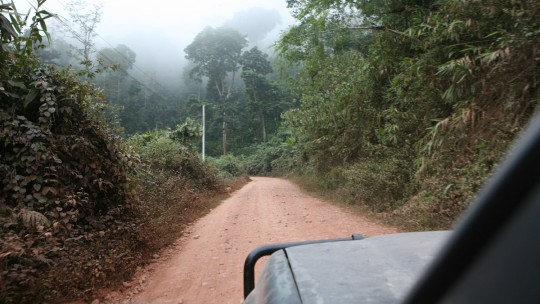
In the morning, on a mountain road south of Oudom Xai, Philip and I split. He is going to the eastern part of the country and I will keep going south. Maybe we will catch up later.
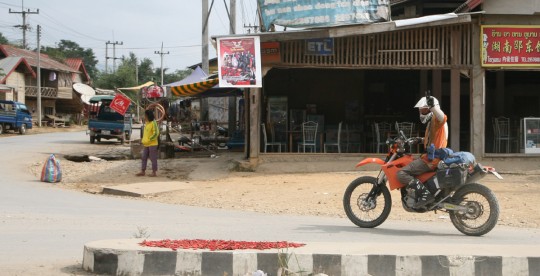
Around noon I meet again the Mekong River and follow it toward the south. I arrive in Luang Prabang in the afternoon. By then I feel pretty weak and I am coming down with a cold. It is a nice last present from the cold mountains. Time for me to find a guesthouse and take some rest, a plan I execute promptly.
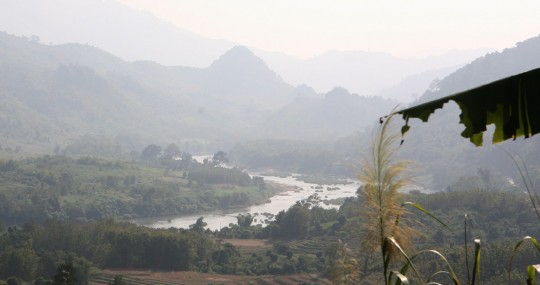
The city, located at the convergence of the Mekong and the Nam Khan River used to be the royal capital of Laos before the communist takeover in the 70’s. The city is famous for its many temples as well as for its French influenced architecture in more modern buildings. It is a pleasant and touristy place, the Laos equivalent of Chiang Mai in Thailand.
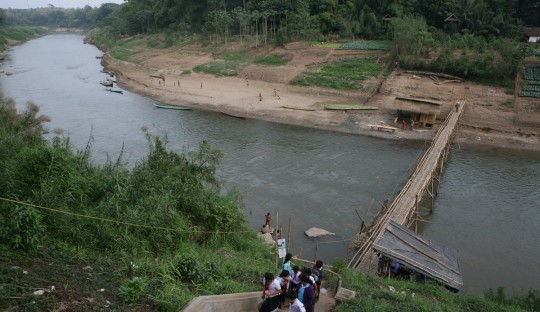
I decide to stay there for a bit, until my cold is gone (Oudomphong, US$7.5, recommended). It is nice to stroll along the streets and be able to get good French-influenced food like croissants or bread. The night market is the ideal place to get diner and few bars offer me a chance to try to boost my health with rum and lime juice.
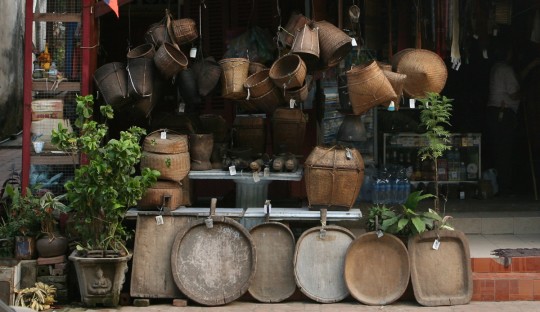
There are not many tourist spots in Laos, so soon enough I meet again most of the people I saw in Phongsaly. Good reason for celebration but quiet celebration: bars in the town close before midnight. Still a progress compared to up in the mountain where everything was shut down by 9 p.m.
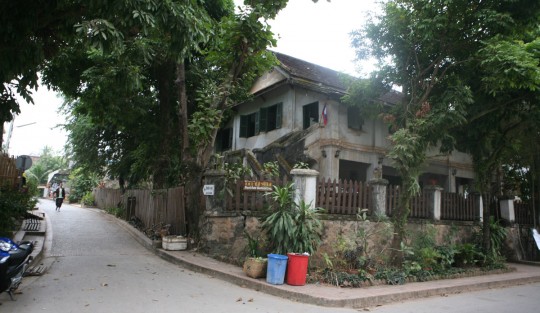
Few days later, it is time to go south. I will now go to Vientiane and continue my route back to Bangkok. I already began to get quotes from shipping companies to send my ride back to L.A. I will also need to get a Chinese visa as I still hope to be able to get from Hong-Kong to Beijing by train.
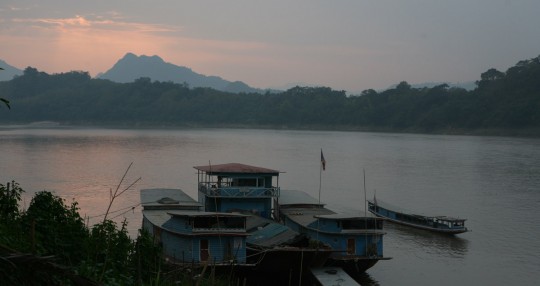
From China I should be able to get a boat to South Korea, and from there hop in another ship to Japan. More details in upcoming posts…
